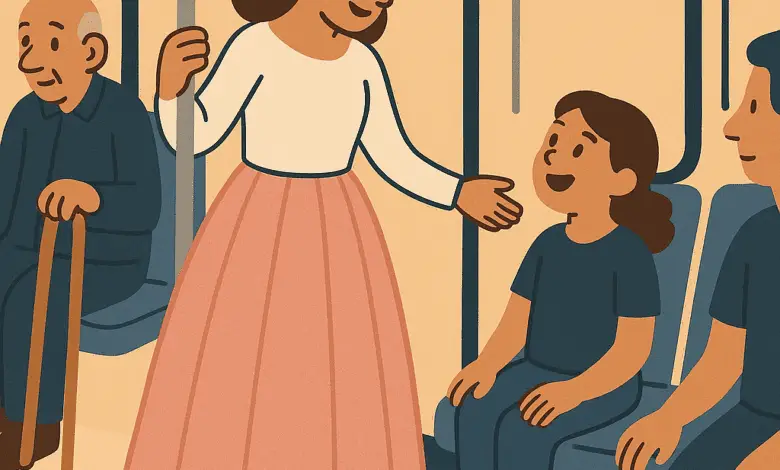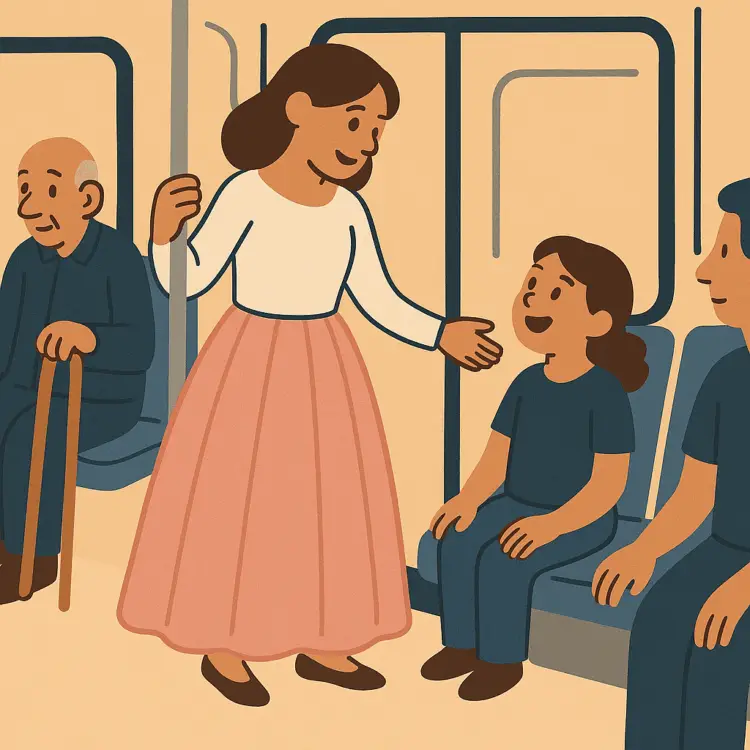
Age Appropriate or Person Appropriate?
After the recent loss of sensory education pioneer Flo Longhorn, many of us have found ourselves reflecting on the values and practices that continue to shape inclusive support. In that spirit, we’re proud to share this thoughtful new piece from Joanna Grace — founder of The Sensory Projects and a long-time advocate for people with profound and multiple learning disabilities. Joanna has been reflecting on the ideas that continue to shape inclusive practice, and I was very pleased to receive this thoughtful new piece from her:
🗝️ Key Takeaways – Easy Read Style
| ✅ What it’s about | 📌 Easy Read Summary |
|---|---|
| 🧠 Big Idea | It’s better to be person appropriate, not just age appropriate. |
| 🏫 Where it started | In the past, disabled people were often treated like children. Some ideas were created to change that. |
| ⚠️ When it went wrong | People misunderstood. They thought everything had to match a person’s age—even if it made them sad. |
| 💔 What happened | Some people had to give up toys or shows they loved, like Thomas the Tank Engine or Care Bears. That wasn’t fair. |
| 🧸 Truth about ‘childish’ things | Lots of adults—disabled and non-disabled—enjoy things made for children. It’s normal and makes people happy. |
| 🩷 A personal story | Joanna once wore a big pink skirt on the train. A little girl saw her and smiled—she saw that adults can still enjoy fun things too. |
| 💬 What matters most | We should respect what people love. If a toy, show, or object makes someone happy or helps them feel safe, let them have it. |
| 🌈 Final thought | Joy has no age limit. We should all feel free to like the things we like, no matter how old we are. |
Age appropriate or Person appropriate?
When I began working as a trainer, delivering training to settings that support people with intellectual disabilities and neurodivergent people, I was often asked what I thought about allowing people to have access to items considered childish. “Shouldn’t everything be age appropriate?” was the question.
Now I am not asked that anymore, our understanding has grown and we now recognise that we should aim to be person appropriate. But every once in a while the question pops up again, wack a mole style it just won’t fully go away. So in this article I present a brief informal history in the hope of giving it another swift bonk on the head that might keep it lying low for as long as possible!
Where the idea of ‘age appropriateness’ came from
Historically people with disabilities have been infantilised, treated as children, considered ‘less than’ someone who does not experience disability. Disabled campaigners have fought to challenge these views. Normalization (a worrying sounding term with a less worrying meaning) theory sprang up in the 1970s as people looked to end the institutionalisation of disabled people, the theory said that disabled people had a right to everything entailed within a normal life: a home, a job, a relationship and so on. They are not perpetual children to be patronised and molly coddled.
When good intentions went wrong
You know the game where one person whispers to another and they then whisper what they heard to another person and so on, and at the end you all laugh at how different the message ended up. Well what happens next in this story is like a sorry version of that, because somewhere in the late 80s early 90s people took that idea that you should treat disabled people according to their age and used it to deem that everything provided to them should be “age appropriate”. This is great as a start point but the actioning of it was not so great.
As a start point it meant that instead of endlessly singing twinkle twinkle little star and going on bear hunts disabled people now got to listen to Top of the Pops (yes still a thing back then, I’m old enough to remember, if you’re not you can probably find it on iplayer or Youtube!) and watch Eastenders – great stuff! But alongside this they were told that they could no longer watch Thomas the Tank Engine, no longer keep their cuddly toy Care Bear with them day and night. People were forcibly separated from things they loved.
Happily many of the people enacting this separation of loved item from person loving said item could feel in their bones that what they were doing was wrong. Excuses were made and 20 year old young men in care homes were still allowed their Thomas the Tank engine plate, people were helped to smuggle their favourite My Little Pony in their handbag to the disco. Those who recognised the wrong in separating people from objects and cultural experiences that brought them joy and helped them to feel safe began to wryly point out that the non-disabled community wasn’t so age appropriate anyway.
The truth about so-called ‘childish’ things
If you take a trip around an office block of busy inner city workers, or around a school staffroom at a bustling secondary school you will doubtless find grown women writing with novelty topped pens, you’ll find men with Mr Men socks on, do an audit of lunch boxes and you’ll find plenty with reference to ‘childish’ Tv programme characters. If you followed these non-intellectually disabled adults home you’d probably find more failures in age appropriateness. Just looking around my own house now I can see the knitted Penguin my mother made me for my very first Christmas sat by my bed (an adult with a cuddly toy) there’s a small fuzzy rabbit on the shelf that I was given by a boyfriend decades ago (another cuddly toy). The T-shirt I’m giving to my friend for Christmas has a slogan from a TV show we watched together as children (I’m encouraging age inappropriateness in others). My husband has a stack of computer games that he has played since he was ten, and whilst he plays his games I hula hoop (a child’s toy). Perhaps if you did that office block walk around, or you did a roll call of lunch boxes in the secondary school staffroom you would find someone who didn’t have something childish on them….and how sad that would be.

How sad to be an adult who has lost touch with all the joy and magic of childhood, who has surrendered fun. I often wear ridiculous clothing, last week as I was wrestling my way onto a crowded commuter train whilst wearing a floor length pink tulle layered skirt (think the sort of pink ballerina skirt little girls wear but ankle length) I caught the eye of a small girl, she must have been 4 or 5, watching me. Her eyes were a blaze, in me she saw the possibility that when she grew up she wouldn’t have to wear the boring clothes adults do, when she is big she might still be allowed to dress up in pink tulle and twirl, she might still be allowed to carry around her favourite bear and hug and squish him when she feels frightened by the big wide world, she might still be allowed to play.
What being ‘person appropriate’ really means
Crushing play in the name of age appropriateness is not an advocacy move. To deny someone something they love for the sake of a social rule is cruel (if they love something that actively harms then, then of course you step in, but not just because of an idea of the status quo). As a teacher I loved it when someone had a ‘thing’ they were particularly into. I can teach the whole curriculum through the medium of Thomas the Tank engine or as if it is an episode of Sesame Street. Those beloved things saved me the work of trying to figure out how to make what I wanted to teach interesting!
Joy doesn’t have an age limit
The balance is this: Offer people the experiences appropriate to their age, but respect what is appropriate to them, value what they value, be person appropriate. And in your own life, maybe embrace a little more those things that are not age appropriate – there is a beautiful freedom in being just as you are, without regard for who you are supposed to be based on the number of times you have travelled around the sun.
Editor’s notes and Further Reading: The Ideas Behind Person-Appropriate Support
The move from “age-appropriate” to “person-appropriate” support is grounded in decades of disability rights work and academic study. For more depth, explore these foundational resources:
The Principle of Normalisation
The concept of Normalisation argues disabled people should access everyday life alongside others. Learn more at
wolfwolfensberger.com.
Key text: The Principle of Normalization in Human Services by Wolf Wolfensberger.
The Social Model of Disability
This model reframes disability as a result of societal barriers. Read a summary at
The Social Model of Disability (PDF).
Person-Centered Planning
“Person-appropriate” support is the core of Person-Centred Planning. Key paper:
The Origins of Person-Centered Planning by Connie Lyle O’Brien and John O’Brien.
Academic Critiques of “Age-Appropriateness”
Some scholars argue rigid age-based standards can exclude and harm. See
Challenging the Tyrannous Practice of ‘Age-Appropriateness’ by Julia Barnes.